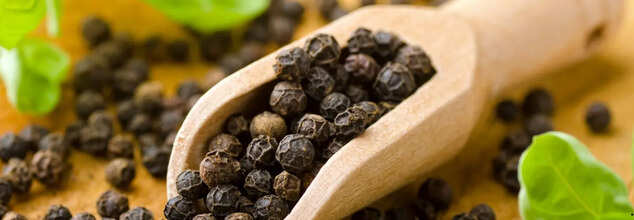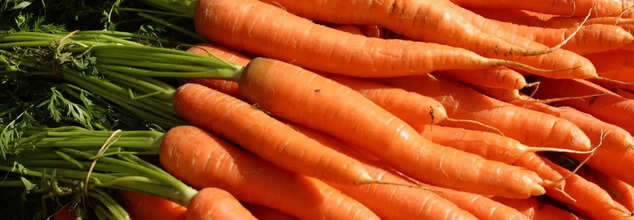
Credits: Canva
Here's All That You Need To Know About The Atkins Diet
While there exists many kinds of diets, there is not one best suited for everyone. Every diet is different and so is every body type. However, if you are someone who is looking for a low-carb diet, then you may be interested in trying the Atkins Diet. This is primarily recommended for weight loss. Those who promote this diet claim that individuals can lose weight while eating unlimited amounts of protein and fat and leaving out the carbohydrates.
Since the early 2000s, there have been various studies conducted that suggest that low-carb diets can be effective for weight loss without requiring calorie counting. These diets have also been linked to improvements in several health markers, including blood sugar levels and cholesterol.
Origin
The Atkins diet was originally developed by Dr Robert C Atkins, who was a physician. He introduced this eating plan in his 1972 best-selling book. Over the years, this diet has gained widespread popularity, and numerous books have been also written about it.
Initially, the diet was criticized. The major criticism came because of the high saturated fat content, which was believed to be unhealthy. However, research on the effects of saturated fat, especially in relation to heart disease, has been mixed, and the topic remains a subject of scientific debate.
The Saturated Fat Debate
The role of saturated fat in heart disease has been extensively studied. According to a review by the American Heart Association (AHA), replacing saturated fat with polyunsaturated fat may reduce the risk of cardiovascular disease by approximately 30%. Other studies also suggest that replacing saturated fats with healthier fats could lower the risk of heart attacks and strokes.
However, some research has found no significant connection between reducing saturated fat intake and a lower risk of cardiovascular disease. Some experts argue that overall diet quality is more important than focusing on individual nutrients.
Compared to other diets, the Atkins diet and other low-carb approaches have been found to result in more weight loss and greater improvements in blood sugar control, HDL (good) cholesterol levels, and triglycerides than low-fat diets. However, some research indicates that low-carb diets may raise LDL (bad) cholesterol, although the degree of increase varies between individuals.
The Four Phases of the Atkins Diet
The Atkins diet consists of four phases:
Phase 1 (Induction): For two weeks, carbohydrate intake is limited to under 20 grams per day. This phase encourages eating high-fat and high-protein foods along with low-carb vegetables like leafy greens.
Phase 2 (Balancing): Gradually, nuts, low-carb vegetables, and small amounts of fruit are reintroduced.
Phase 3 (Fine-tuning): As individuals get close to their target weight, they can increase their carbohydrate intake until weight loss slows.
Phase 4 (Maintenance): At this stage, individuals determine how many carbs they can eat without regaining weight.
Some people modify these phases based on personal preferences. For example, some may skip the induction phase and include a variety of fruits and vegetables from the start, while others may choose to follow a very low-carb ketogenic (keto) diet indefinitely.
Foods to Avoid on the Atkins Diet
The Atkins diet restricts or limits the following foods:
- Sugar: Found in soft drinks, fruit juices, cakes, candy, and ice cream.
- Refined grains: Such as white bread, white rice, and white pasta.
- Diet and low-fat foods: Many of these products contain added sugars.
- High-carb fruits: Bananas, apples, oranges, pears, and grapes (restricted in the induction phase).
- Starchy vegetables: Potatoes and sweet potatoes (restricted in the induction phase).
- Legumes: Lentils, beans, and chickpeas (restricted in the induction phase).
Foods to Eat on the Atkins Diet
The Atkins diet encourages consumption of:
- Meats: Pork, lamb, chicken, and bacon.
- Fatty fish and seafood: Salmon, trout, sardines, and mackerel.
- Eggs: Preferably omega-3 enriched or pastured eggs.
- Low-carb vegetables: Kale, spinach, broccoli, and asparagus.
- Full-fat dairy: Butter, cheese, cream, and full-fat yogurt.
- Nuts and seeds: Almonds, walnuts, macadamia nuts, and sunflower seeds.
- Healthy fats: Extra virgin olive oil, coconut oil, avocado, and avocado oil.
- Whole grains: Brown rice, oatmeal, bulgur, quinoa, and teff (in later phases).
Meals should be centered around a high-fat protein source, along with vegetables, nuts, and healthy fats. Complex carbohydrates can be included in moderation based on individual carb tolerance.
Beverage Choices on the Atkins Diet
- Water: The best choice for hydration.
- Coffee: Rich in antioxidants and may offer health benefits.
- Green tea: Contains beneficial antioxidants.
- Alcohol: Allowed in small amounts. Dry wines are preferred, while high-carb drinks like beer and sugary cocktails should be avoided.
Following Atkins as a Vegetarian
Vegetarians and vegans can adapt the Atkins diet by emphasizing plant-based fat and protein sources. Healthy fats should make up about 43% of their intake, coming from avocados, nuts, seeds, olive oil, and coconut oil. Protein sources can include tofu, soy products, and legumes (in later phases). Lacto-ovo vegetarians can also consume eggs, cheese, and other dairy products.
Planning Meals on the Atkins Diet
To stay on track with the Atkins diet:
- Plan weekly menus: Preparing meals in advance can help maintain consistency.
- Make a shopping list: Choose the least processed options that fit your budget.
- Include snacks: Keep low-carb snacks available to avoid unhealthy temptations.
- Be mindful when eating out: Opt for extra vegetables instead of bread or rice, and request additional healthy fats like butter or olive oil.
Potential Risks of the Atkins Diet
While the Atkins diet may promote weight loss, it also comes with potential risks, particularly in the early stages. Possible side effects include:
- Headache
- Dizziness
- Fatigue
- Weakness
- Constipation
- Low blood sugar
- Kidney issues
- Electrolyte imbalance
Additionally, restricting carbohydrates may result in insufficient fiber intake, which is crucial for gut health and disease prevention. Some research suggests that high-fat diets could negatively impact gut bacteria, potentially increasing the risk of cardiovascular disease.

Credit: Canva
How To Use Black Pepper For Weight Loss
Spices are the heart of Indian cuisine, adding depth and distinct flavors to dishes. Besides that, they are also hold strong medicinal value. One such widely used spice is black pepper, also known as Kali mirch. Its bold aroma and sharp taste can instantly elevate any dish, making it an essential ingredient in Indian cooking. But beyond enhancing flavor, this common kitchen staple is also a natural fat burner.
How Does Balck Pepper Aid Weight Loss?
Black pepper contains piperine, a bioactive compound known for boosting metabolism and preventing fat accumulation in the body. Additionally, it enhances the concentration of good cholesterol, contributing to better heart health.This spice is classified as a thermogenic food, meaning it helps accelerate metabolic processes, allowing the body to burn calories more efficiently. Furthermore, studies suggest that consuming spicy foods can increase satiety, making you feel full even after consuming smaller portions—an important factor in weight management.
Ways To Use Black Pepper For Weight Loss
Several studies highlight the benefits of incorporating black pepper into the daily diet for effective weight loss. While this spice is generally safe for consumption, moderation is key. Experts recommend limiting intake to 1-2 teaspoons per day, as excessive consumption may lead to digestive issues.Here are some easy and effective ways to include black pepper in your diet:
1. Black Pepper Tea
For those who love tea, adding black pepper can transform it into a **weight-loss-friendly beverage**.
How to prepare
- Boil one cup of water in a pan.
- Add one inch of crushed ginger and let it simmer for five minutes.
- Strain into a cup and steep a green tea bag in it.
- Add half a teaspoon of black pepper, stir well, and drink.
2. Chewing Raw Black Pepper
If you can tolerate its strong taste, chewing 2-3 black peppercorns on an empty stomach every morning can be beneficial.
3. Black Pepper and Honey Drink
A simple detox drink, this combination can support digestion and metabolism.
How to prepare
- Boil one cup of water and let it cool slightly.
- Stir in one teaspoon of honey and half a teaspoon of freshly ground black pepper.
- Drink it warm for best results.
4. Black Pepper Oil
Black pepper oil, when consumed in small amounts, may aid in weight loss.
How to use:
- Purchase 100% pure black pepper oil from a reliable pharmacy.
- Add one drop to a glass of water, mix well, and drink before breakfast.
5. Black Pepper in Juices
Enhance the nutritional value of fruit and vegetable juices by adding black pepper. Simply mix half a teaspoon into your juice before consumption.
Best Time to Consume Black Pepper
For maximum benefits, black pepper should be consumed **on an empty stomach**, preferably before breakfast. This helps stimulate digestion and optimize metabolic activity throughout the day.
Are There Any Side Effects Of Using Black Pepper?
While black pepper is a powerhouse of health benefits, excessive intake can lead to:
- Gastric issues and stomach upset
- Irritation of the intestinal lining
- Increased risk of miscarriage in pregnant women (should be avoided during pregnancy)

Image Credit: Canva
Most People Overlook These 4 Essential Times to Drink Water Every Day
Did you know the timing of when you drink water is as important as the amount of water consumed? While many individuals are busy making sure they reach their daily quota, not many are aware that consuming water at certain times will get the best out of it. Whether boosting your metabolism first thing in the morning or aiding digestion prior to meals, water helps to keep your body in top condition. Curious when you need to be drinking this life-sustaining potion?
Hydration is basic to overall well-being, but many pay more attention to the amount of water they consume than to when they consume it. All cells, tissues, and organs in the body need water to work correctly. Hydration affects digestion, cardiovascular health, brain function, and even spinal health. Yet, drinking water in the most effective way possible is as essential as drinking enough of it. Rather than swallowing several glasses at one time, distributing water consumption strategically throughout the day can yield the greatest rewards.
Based on National Academies of Sciences, Engineering, and Medicine hydration recommendations, men need a minimum of 13 (8 oz) cups of fluid every day, while women need at least 9 (8 oz) cups or more. Yet these amounts vary depending on the level of activity, climate, and personal health status. To tap into the full potential of hydration, let's discuss four critical times to consume water that most people unknowingly neglect.
1. After Waking Up
Your body dehydrates while you are asleep, making you slightly dehydrated in the morning. Drinking water when you wake up in the morning rehydrates your body, cleanses you of toxins, and gets your metabolism going. It also gets internal organs to work, activating them for the day. Hydration in the morning has been proven to increase brain function, which enhances memory and concentration. Rather than for coffee, use your hand to stretch for lukewarm lemon water to awaken digestion and trigger detoxification.
2. Pre-meal
Having a glass of water approximately 30 minutes prior to eating can help digestion by conditioning the stomach to digest food better. Adequate hydration assists the body in secreting digestive juices and enzymes required to digest nutrients. Nevertheless, do not drink excessive water close to or immediately after meals, as it could weaken gastric acids and slow down digestion. Instead, drink water at least an hour after meals to facilitate nutrient absorption and avoid bloating.
3. Before a Bath
Interestingly enough, having a glass of water before a bath can have heart benefits. Exposing the body to warm water in a bath or shower may slightly reduce blood pressure by causing blood vessels to dilate. Pre-hydration ensures there is good circulation and avoids dizziness or dramatic drops in blood pressure. Such a simple habit can be quite useful for hypertensive patients or those who are prone to becoming dizzy after scalding showers.
4. Before Sleep
Hydration does not end at bedtime. Drinking too much water just before sleeping might cause you to wake up during the night, but a minimal glass of water an hour or so before sleeping helps maintain hydration and aids in overnight body functions. This is particularly significant for those who suffer from dry mouth, night sweats, or leg cramps. Dehydration during nighttime can also be prevented through good nighttime hydration that aids in muscle repair and improves the body's ability to regulate temperature while sleeping.
How to Develop a Routine of Drinking Water Consistently?
It can be difficult to drink enough water every day, but having a systematic routine simplifies the task. The following are some expert-recommended tips to ensure that you remain hydrated consistently:
Stick to a Water Routine
If you find it hard to drink sufficient water, a basic routine can work:
Early morning – A glass of water in the morning before breakfast is the first step towards staying hydrated.
After meals – An hour after meals, drinking water aids in digestion.
Mid-afternoon – When you feel your energy flagging, drink water rather than relying on caffeine.
Before bed – A small glass or sip before bedtime keeps you hydrated.
Whenever you sweat – Drink before and after exercising, being out in the heat, or other activities that cause you to sweat.
Use a Water Bottle for Easy Tracking
Rather than measuring the number of cups, monitor your consumption by fixing a target using the number of bottles you need to consume in a day. For example, refilling a 500 ml bottle four times will provide a good amount of water.
Make Water More Palatable
Plain water is monotonous to many, so try alternatives to make it tastier:
- Include wedges of citrus fruits like lemon or orange.
- Use infused water with cucumber, mint, or berries.
- Choose room temperature or cold water depending on your preference.
- Use filtered water if tap water tastes unpleasant.
Maintain a Visual Reminder
Having a glass of water beside your bed or on your workspace acts as a constant reminder to drink. Small environmental modifications can support hydration habits easily.
One of the easiest yet most potent things you can do for your health is to drink water. Although it's important to prioritize the overall intake of water taken in a day, the when and not the how much makes a big difference in getting the most out of it.

Credit: Canva
13 Root Vegetables That Are Doctor Approved For Curing Your Illness
Root vegetables like turnips, ginger, and beets grow underground and offer a range of health benefits when incorporated into your diet. These vegetables have been a staple in various cuisines for centuries and are known for their rich nutritional profiles. potatoes, carrots, and onions. However, many other types are available, bringing unique nutrients and health advantages.
1. Onions
Onions are widely used in cooking and are packed with fiber, vitamin C, and antioxidants. These antioxidants help combat oxidative damage and may contribute to disease prevention. Studies suggest that consuming onions can lower blood sugar levels and may also have anticancer properties. They can be easily added to a variety of dishes, including salads, soups, casseroles, and pasta.
2. Sweet Potatoes
Sweet potatoes are highly nutritious and rich in fiber, vitamin C, manganese, and vitamin A. They also contain antioxidants such as beta-carotene. Research indicates that sweet potatoes may help improve blood sugar control, enhance immune function, and support skin and eye health. They can be baked, boiled, roasted, or sautéed to complement numerous meals.
3. Turnips
Turnips are an excellent source of vitamin C, fiber, potassium, and manganese. Vitamin C is known to boost immunity and may help reduce the severity of respiratory infections. As cruciferous vegetable, turnips are also linked to a lower risk of stomach, breast, and colorectal cancer. They can be prepared in various ways, including stir-frying, roasting, or using them in salads and coleslaws.4. Ginger
Ginger is packed with antioxidants, including gingerol, which has been linked to numerous health benefits. It is commonly used to alleviate nausea, particularly during pregnancy. Additionally, ginger may help reduce inflammation and menstrual pain. It can be added to teas, soups, smoothies, and stews for both its flavor and medicinal properties.5. Beets
Beets provide fiber, folate, and manganese, along with high levels of nitrates, which support heart health by lowering blood pressure. They may also enhance exercise performance and improve blood circulation. Some studies suggest beets have anticancer properties. They can be consumed in various forms, including roasting, juicing, pickling, or steaming.
6. Garlic
Garlic belongs to the Allium family and is rich in manganese, vitamin B6, and vitamin C. The compound allicin, released when garlic is crushed or chopped, contributes to its medicinal properties. Garlic is linked to improved heart health, reduced cholesterol levels, and enhanced immunity. It is a versatile ingredient that adds flavor to many savory dishes.
7. Radishes
Low in calories yet high in fiber and vitamin C, radishes also possess antifungal properties. Research suggests they may help prevent stomach ulcers. Their crunchy texture makes them a great addition to salads, tacos, and sandwiches.
8. Fennel
Fennel has a distinct licorice-like taste and is rich in fiber, vitamin C, potassium, and manganese. It contains anethole, a compound that may help regulate blood sugar levels and has antimicrobial properties. Fennel can be eaten raw, roasted, or sautéed.
9. Carrots
Carrots are loaded with vitamin A, beta-carotene, and vitamin K. They have been associated with improved antioxidant levels and reduced cholesterol. Beta-carotene intake has been linked to a lower risk of certain cancers and age-related vision loss. Carrots can be eaten raw or cooked in various dishes.
10. Celeriac
Also known as celery root, celeriac is high in vitamin K, which is essential for blood clotting and bone health. It can be boiled, roasted, mashed, or added to salads for a unique flavor.
11. Turmeric
Turmeric contains curcumin, a compound with powerful anti-inflammatory properties. Studies suggest curcumin may help reduce joint pain, stabilize blood sugar, and alleviate depression symptoms. To maximize its benefits, it should be paired with black pepper, which enhances curcumin absorption.
12. Potatoes
Potatoes are widely consumed and are available in many varieties. They provide fiber, vitamin C, vitamin B6, and potassium. Resistant starch in cooked and cooled potatoes supports gut health. Choosing baked or boiled potatoes over fried versions ensures better nutritional benefits.
13. Rutabaga
Rutabagas are rich in vitamin C, potassium, and antioxidants. They also contain fiber, which aids digestion and heart health. Their glucosinolate content may protect against cancer. Rutabagas can be roasted, mashed, or added to soups and salads.
© 2024 Bennett, Coleman & Company Limited

